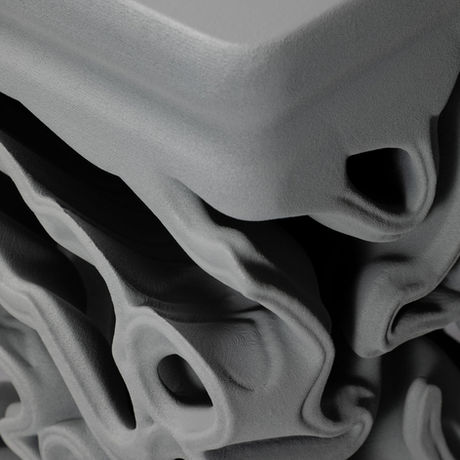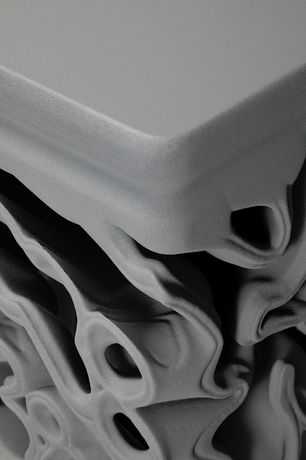PRIMITIVES [1]
London, United Kingdom
2021
OZRUH
Description:
Levent Ozruh has designed a family of nightstands that diverge from similar algorithmic DNA. As objects they are hybrids of sculpture and furniture; they are a frozen instant of the negotiation between the visual and functional agenda.
The morphology of each object is intended to lead to a reevaluation of what makes an object primitive; the generated aesthetics, the tools of creation, or the society it is produced for?
While the formal language and aesthetics of the PRIMITIVES appear to be raw and archaic, the means of creation explores contemporary computational processes. This leads to a gap between the appearance and the codified recipes that are written as a series of algorithmic procedures by the designer.
Swirls and indentations are brought to the fore by simple colouration and the play of light and shadow. This is further amplified by the textured finish of the quartz; as light levels change throughout the day the colouration of the PRIMITIVES change emphasising the transience of time.
The additive manufacturing process has created objects that are related but not identical. These six objects are a demonstration of the control of complexity exercised by the designer, curating the varied entities produced by the algorithm’s rules. Each piece retains integrity but they have different functional capacities; for example, in some the useable surface area is reduced, allowing design drivers to take precedence and in others, the opposite occurs.
Copyright: Images courtesy of Studio Naaro and Levent Ozruh
Technical info:
SH-F01 (Coloring)
Material:
Dimensions:
40 x 40 x 60 cn
Category:
Art

OZRUH
Established in 2019 in London, OZRUH is deeply inspired by the principles of evolution and diversity in nature, driving us to venture beyond the traditional confines of manual and analog human creativity. Our pursuit is aimed at harnessing the intrinsic diversity and richness offered by nature's evolutionary processes, proposing an architectural ethos that is pluralistic rather than idealistic.
Our design philosophy embraces the entropic nature of our universe. Moving away from the closed-ended silhouettes characteristic of historical architecture, which often relied on straightforward geometrical forms, we focus on creating structures that are anti-fragile, adaptable, and open-ended. This approach signifies a departure from the fragilities associated with the entropy of historical architectures to an open-ended methodology that extracts value from disorder and randomness. Thus, architecture can move beyond the binary state of being complete or incomplete to an adaptive state, characterized by incremental progressions of growth, aging, or reconfiguration.




